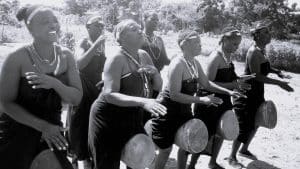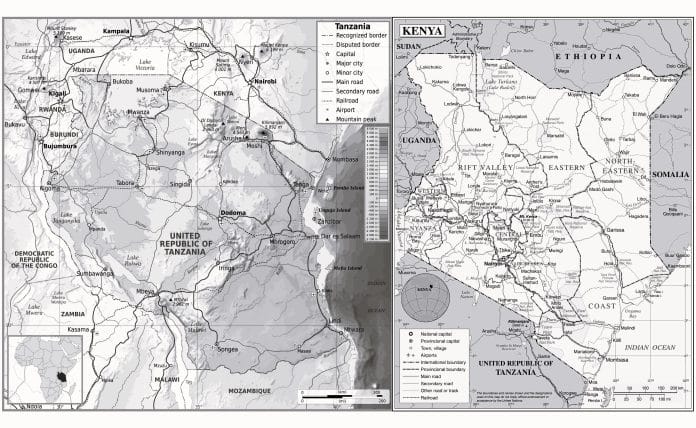Unraveling the Beauty: A Road Map to the Cultural Gems of Kenya and Tanzania
Embark on a journey of discovery with a road map of Kenya and Tanzania as we unveil the hidden cultural gems there. From the vibrant traditions of the Maasai warriors to the spellbinding beauty of the Serengeti, these East African countries offer an enchanting tapestry of history, nature, and culture.
Cultural diversity in Kenya and Tanzania
Kenya and Tanzania are home to a rich tapestry of cultures, each with its own unique traditions, languages, and customs. In Kenya, you will find over 40 different ethnic groups, including the Kikuyu, Luo, and Luhya, each with its own distinct cultural practices. Similarly, Tanzania boasts over 120 different ethnic groups, including the Sukuma, Chagga, and Hadzabe.
These diverse cultures contribute to the vibrant and colorful tapestry of East African heritage. Whether it’s the Maasai warriors adorned in their traditional red robes and beaded jewelry or the Swahili people with their rich history of trade and coastal influence, you will be captivated by the cultural diversity that the road map of Kenya and Tanzania has to offer.
Exploring the local communities and interacting with the people will give you a deeper understanding and appreciation of the cultural fabric that makes up these countries. From the rural villages in the Maasai Mara to the bustling markets of Nairobi, you will encounter a kaleidoscope of languages, traditions, and beliefs that will leave a lasting impression.
Traditional music and dance in Kenya and Tanzania

Music and dance play a central role in the cultural heritage of Kenya and Tanzania, infact, this road map of Kenya and Tanzania would be incomplete without mentioning the traditional music and dance in these two countries. The rhythmic beats and melodic tunes will transport you to another world, where music is not just entertainment but a way of life.
In Kenya, traditional music is deeply rooted in the oral tradition, with songs and dances passed down through generations. The Maasai, for example, have their own unique style of music, characterized by deep, resonant voices and rhythmic chants. The Luo people, on the other hand, are known for their lively dances accompanied by the nyatiti, a traditional stringed instrument.
This road map of Kenya and Tanzania also showcases the Taarab music, a notable style of music native to Tanzania. The Taarab music is a fusion of Arabic, Indian, and African influences. The melodious tunes and poetic lyrics will captivate your senses and transport you to a bygone era. The ngoma, a traditional dance performed in Tanzania, is a spectacle to behold. With its energetic moves, vibrant costumes, and rhythmic drumming, the ngoma is a celebration of life and community.
Attending a traditional music and dance performance is a must-do when visiting Kenya and Tanzania. It will not only provide you with a glimpse into the rich cultural heritage of these countries but also leave you with a sense of awe and appreciation for the power of music to unite and uplift.
Traditional cuisine of Kenya and Tanzania
No road map of Kenya and Tanzania would be complete without mention of the various local cuisines visitors can Indulge in. The culinary traditions of these countries are as diverse as their cultures, offering a tantalizing array of dishes that will delight your taste buds.

In Kenya, staple foods such as maize, beans, and potatoes form the basis of many meals. The famous nyama choma, or grilled meat, is a must-try delicacy. Served with a side of ugali, a thick maize porridge, and accompanied by a spicy tomato relish known as kachumbari, nyama choma is a favorite among locals and visitors alike.
This road map of Kenya and Tanzania also showcases highlights of Tanzanian cuisine. Tanzanian cuisine is heavily influenced by Arab, Indian, and African flavors. The pilau, a fragrant rice dish cooked with spices and meat, is a popular choice. For seafood lovers, the Zanzibar archipelago offers a mouthwatering array of dishes, including octopus curry and grilled lobster.
Sampling the local delicacies is not just about satisfying your hunger but also about immersing yourself in the local culture. From street food stalls to upscale restaurants, you will find a wide range of options to suit your palate. Don’t be afraid to try something new and let your taste buds be your guide.
Cultural festivals and celebrations in Kenya and Tanzania
This road map of Kenya and Tanzania also gives a taste of the vibrant and colorful festivals these two countries are known for. These festivals provide a window into the cultural traditions and practices of the local communities.

In Kenya, the Maasai Mara holds an annual Maasai Cultural Festival, where visitors can witness traditional dances, music, and rituals performed by the Maasai people. This festival offers a rare opportunity to interact with the Maasai warriors and learn about their way of life.
A road map of Kenya and Tanzania must also rightly include the lively music festivals Tanzania is famous for. One of these festivals is the Sauti za Busara festival held in Zanzibar. This festival showcases the best of East African music, with artists from across the region coming together to celebrate the diversity and richness of African culture.
Apart from music festivals, both countries also celebrate religious and national holidays with great enthusiasm. From the colorful festivities of Eid al-Fitr and Christmas to the patriotic celebrations of Independence Day, these festivals provide a unique insight into the cultural fabric of Kenya and Tanzania.
For this road map of Kenya and Tanzania to truly lead you to the hidden cultural treasures, attending a cultural festival or celebration is a must. Immerse yourself in the local culture and witness the vibrancy and joy that permeates these events. From the traditional dances and music to the elaborate costumes and rituals, you will be captivated by the sense of community and celebration that fills the air.
Historical landmarks and monuments in Kenya and Tanzania
Kenya and Tanzania are not just rich in natural beauty but also in historical landmarks and monuments that offer a glimpse into the past.
The first place this road map of Kenya and Tanzania leads you to for a glimpse into the past is in Kenya. Nairobi is home to the Karen Blixen Museum, a tribute to the Danish author who penned the famous book “Out of Africa.” The museum is set in the former home of Karen Blixen and provides insight into her life and the colonial history of Kenya.
Further afield, the UNESCO World Heritage Site of Lamu Old Town offers a fascinating glimpse into the Swahili culture and architecture. The narrow streets, coral stone buildings, and intricately carved wooden doors are testament to the rich history and trade routes that once thrived in this coastal town.
This road map of Kenya and Tanzania also takes us to the ancient ruins of Kilwa Kisiwani and Songo Mnara in Tanzania. These two locations provide a window into the medieval Swahili civilization. These ruins, once important trading centers on the East African coast, offer a fascinating insight into the history and architecture of the region.
No trip to Tanzania would be complete without a visit to the UNESCO World Heritage Site of Stone Town in Zanzibar. The narrow streets, bustling markets, and Arab-influenced architecture make Stone Town a treasure trove of history and culture.
Exploring these historical landmarks and monuments on the road map of Kenya and Tanzania will not only give you a deeper understanding of the history and heritage of Kenya and Tanzania but also provide a unique opportunity to step back in time and imagine the lives of those who came before us.
Traditional arts and crafts in Kenya and Tanzania
The artistic traditions of Kenya and Tanzania are as diverse as their cultures, with each region boasting its own unique styles and techniques.
This road map of Kenya and Tanzania takes us to Kenya first to meet the Maasai. The Maasai people are known for their intricate beadwork, which is often used to adorn clothing and jewelry. The Kamba people, on the other hand, are famous for their wood carving, creating beautiful sculptures and masks that depict the traditional beliefs and myths of their culture.
Tanzania is renowned for its Tingatinga paintings, a unique style of art characterized by bright colors and bold designs. These vibrant paintings, which often depict scenes from everyday life and wildlife, have become iconic symbols of Tanzanian culture.
Visiting local markets and art galleries is also a major part of this road map of Kenya and Tanzania. This is because these two activities are fantastic ways to discover the traditional arts and crafts of these countries. From handmade jewelry and textiles to sculptures and paintings, you will find a wide range of unique and beautiful pieces to take home as a memento of your journey.
Wildlife and nature conservation in Kenya and Tanzania
Kenya and Tanzania are synonymous with wildlife and nature conservation, offering some of the most breathtaking natural landscapes and diverse ecosystems in the world.
One of the highlights on this road map of Kenya and Tanzania in terms of wildlife is the Maasai Mara. The Maasai Mara in Kenya is famous for its annual Great Migration, where millions of wildebeest, zebras, and other herbivores cross the Mara River in search of greener pastures. This incredible spectacle is a testament to the delicate balance of nature and the resilience of these magnificent animals.
In Tanzania, the Serengeti National Park is a UNESCO World Heritage Site and one of the oldest and most famous national parks in Africa. Its vast grasslands, dotted with acacia trees and home to a wide variety of wildlife, including lions, elephants, and giraffes, make it a must-visit destination for nature lovers and wildlife enthusiasts.
Both countries have made significant efforts in wildlife and nature conservation, with numerous national parks and reserves dedicated to protecting and preserving their natural heritage. Visiting these parks on the road map of Kenya and Tanzania not only provides an opportunity to witness the incredible beauty of the African wilderness but also supports the ongoing conservation efforts that are crucial for the survival of these ecosystems.
Best time to visit Kenya and Tanzania for cultural experiences
The best time to visit Kenya and Tanzania for cultural experiences depends on the specific festivals and events you wish to attend. However, in general, the dry seasons are considered the best time to visit as the weather is more favorable for outdoor activities and cultural celebrations.
In Kenya, the dry season runs from January to March and July to October, with the latter being the peak season for wildlife viewing. If you are planning to follow this road map of Kenya and Tanzania , the peak season is the best time to do so. During this time, the Maasai Mara hosts the Great Migration, offering a unique cultural and natural spectacle that should not be missed.
In Tanzania, the dry season runs from June to October, with the Serengeti hosting its own version of the Great Migration. This is also a great time to visit Zanzibar and explore the cultural heritage of Stone Town.
Planning your visit around specific cultural festivals and events will ensure that you get the most out of your experience. From the Maasai Cultural Festival in Kenya to the Sauti za Busara festival in Tanzania, there are numerous opportunities on the road map of Kenya and Tanzania throughout the year to immerse yourself in the cultural richness of these countries.
Embracing the cultural gems of Kenya and Tanzania
Unraveling the beauty of Kenya and Tanzania goes beyond the stunning landscapes and abundant wildlife. It is about immersing yourself in the rich tapestry of cultures, traditions, and history that these countries have to offer.
From the rhythmic beats of traditional music to the tantalizing flavors of local cuisine, following this road map of Kenya and Tanzania will take you on a journey that will captivate your senses and leave you with memories to cherish for a lifetime. Whether it’s exploring the historical landmarks of Lamu Old Town or witnessing the Great Migration in the Maasai Mara, each experience will deepen your appreciation for the cultural gems that lie within these East African countries.
So, pack your bags, put on your adventure hat, and let our expert guide take you on a breathtaking journey through the cultural gems of Kenya and Tanzania. Get ready to unravel the beauty, uncover the history, and embrace the rich cultural heritage that awaits you in these enchanting destinations. Your East African adventure awaits!
For more articles related to Tanzania culture, click here!




























